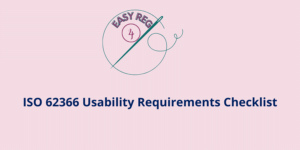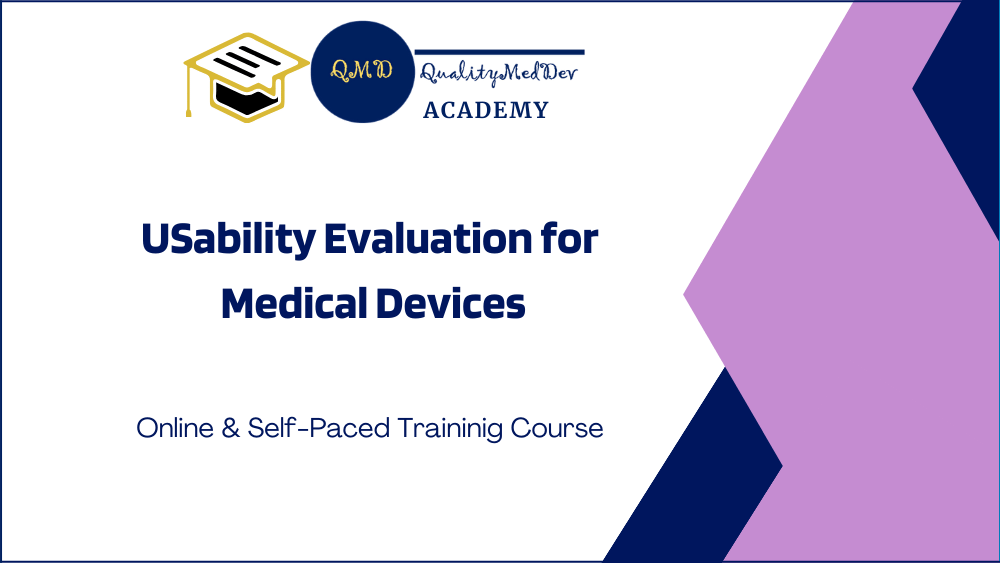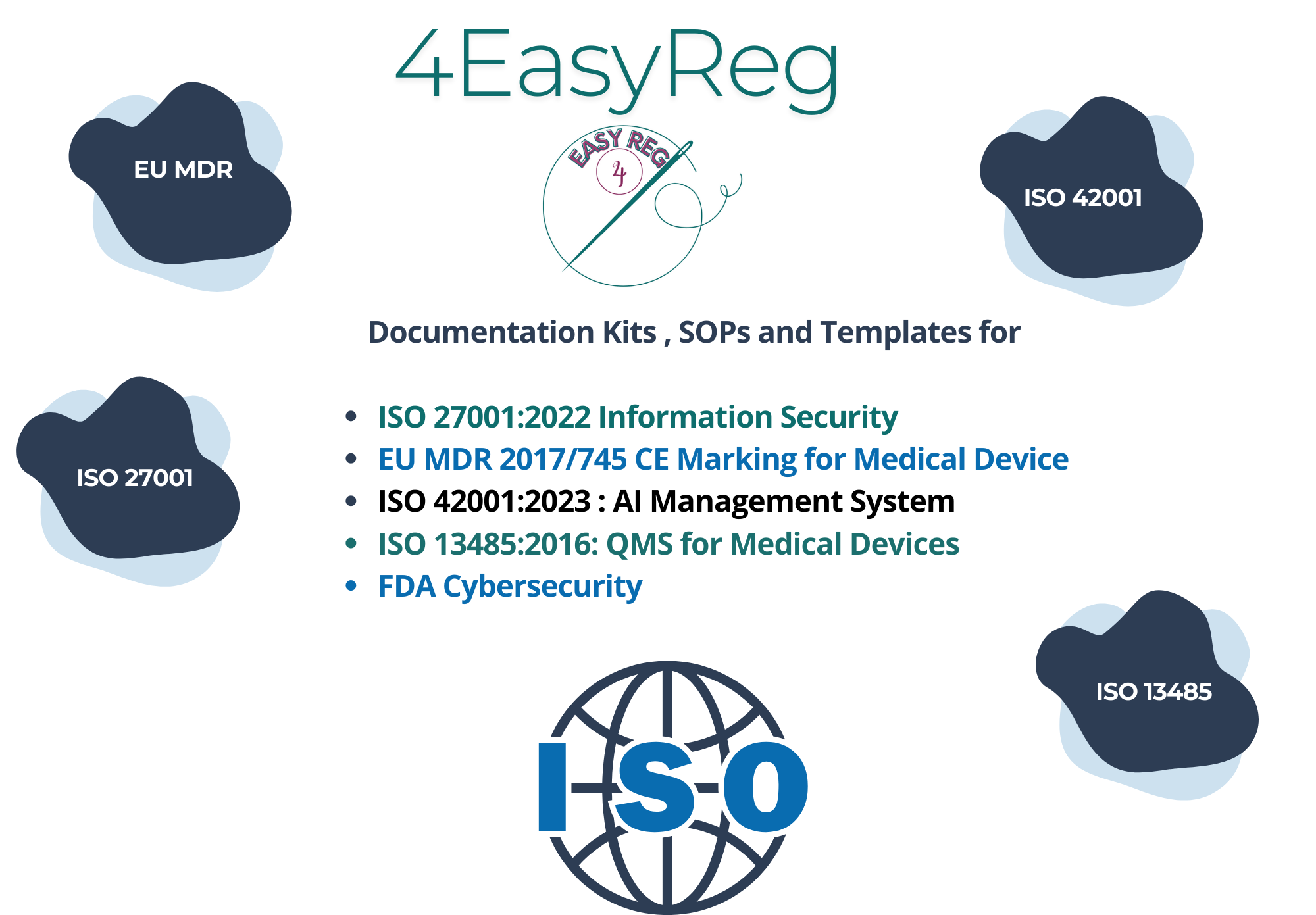ISO 62366 plays a fundamental role in the design process for medical device as it explains the requirements related to usability. Usability studies are an essential part of the design history file.
The human factors engineering process as the goal to ensure that all the possible use, misuse, and use error scenarios are evaluated during the design phase and related mitigations are going to be implemented.
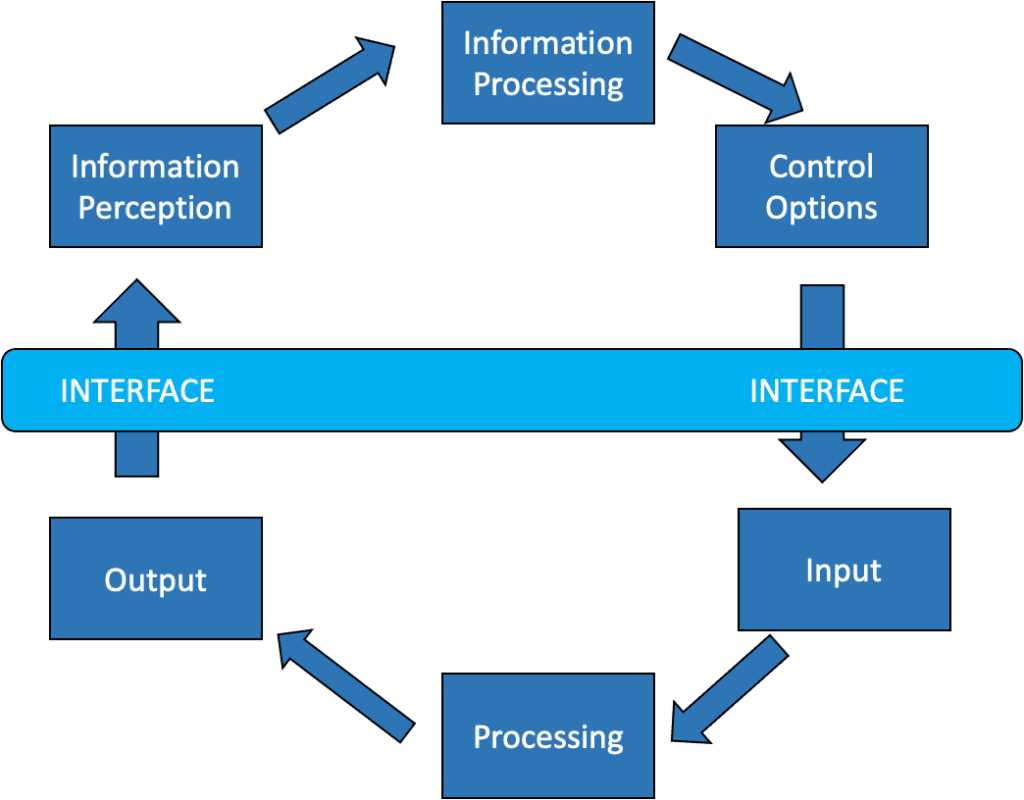
Key Definition for the Usability Process according to ISO 62366
First of all, it is important to provide some definitions, according to IEC 62366-1:2015/AMD 1:2020 – Medical devices — Part 1: Application of usability engineering to medical devices — Amendment 1
- Usability: characteristic of the user interface that facilitates use and thereby establishes effectiveness, efficiency and user satisfaction in the intended use environment.
- Human Factors Engineering: application of knowledge about human behaviour, abilities, limitations, and other characteristics to the design of medical devices (including software), systems and tasks to achieve adequate usability.
- Use Error: user action or lack of user action while using the medical device that leads to a different result than that intended by the manufacturer or expected by the user.
- Formative evaluation: user interface evaluation conducted with the intent to explore user interface design.
- Summative evaluation: user interface evaluation conducted at the end of the user interface development with the intent to obtain objective evidence that the user interface can be used safely, strengths, weaknesses, and unanticipated use errors.
-
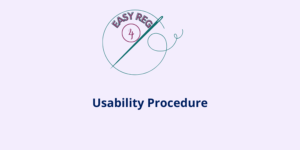 Usability Procedure€64,00
Usability Procedure€64,00
Usability Engineering Process as per ISO 62366
The process for evaluation of human factors engineering is defined within the IEC 62366-1:2015/AMD 1:2020 – Medical devices — Part 1: Application of usability engineering to medical devices — Amendment 1 and can be summirezed in the scheme below.
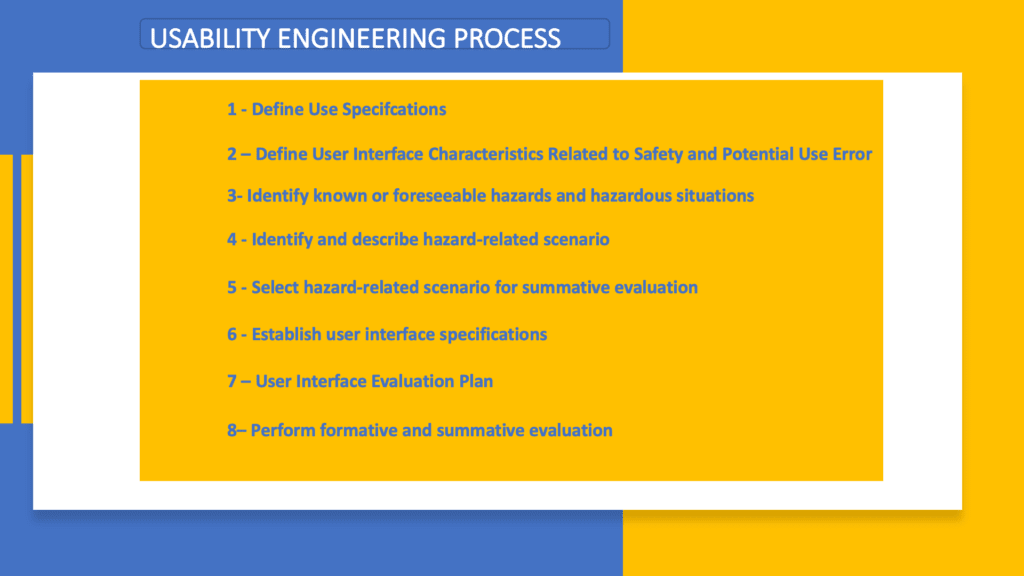
Definition of the Use Specifications
As first step, the definition of the use specifications is the first step for the evaluation of human factors within the design process of a medical device. These use specification shall contain information such as intended medical application, patient population, party of the body interacting with the device, user profile and use environment.
Definition of User Interface Characteristics related to safety
Secondly, in this phase of the human factors engineering process, the user interfaces that are associated to a potential safety related risks need to be identified. Based on the identified user characteristics related to safety and the user specifications defined before, it is now possible to identify the possible use errors, and evaluated their associated risk.
Identification of foreseeable hazards, hazardous situations and user related hazardous situations.
Furthermore, the next phase of the human factors engineering process is the identification of hazards and hazardous situation. This shall be performed in the framework of a risk analysis or risk management process.
User-related hazardous situation shall also be identified, always in the framework of the risk management process.
Selection of hazards-related user scenario for Summative Evaluation
In this phase, the user related hazardous situation identified in the step before shall be selected to be included in the summative evaluation. It is possible to choose two scenario as per ISO 62366:
- all the identified user related hazardous situations
- a sub-set of user related hazardous situations, based on the associated risk.
User Interface Specifications
Moreover, taking in consideration the use specifications, foreseeable use errors and user-related hazardous situation, the user interface specifications shall be defined.
The output of this phase shall include:
- technical requirements for the use interface
- indication whether accompanying documents shall be used
- indication of the necessity to a medical device related training.
User interface Evaluation Plan
Here, we arrived at the key phases of the human factors engineering process described in the ISO 62366. The plan for interface evaluation plan shall be prepared. Two different evaluations shall be performed: formative evaluation and summative evaluation.
The formative evaluation plan shall include the following items:
- Methodology for formative evaluation
- which part of the user interface is under evaluation
- when in the usability engineering process to perform each of the user interface evaluations.
For summative evaluation plan:
- the methodology used and the part of user interface under evaluation
- criteria for determining if information for use are clear and support correct use of the device
- availability of accompanying documents and provision of training during the evaluation
- If there is a usability test, test environment and method for collecting data shall be defined.
Formative and Summative Evaluation according to ISO 62366
Finally, after the evaluation plans are documented, the user interface shall be implemented and, as first step, formative evaluation performed.
Subsequently summative evaluation shall be carried, as per the related plan. It is important to ensure that any further risks identified in these evaluations, the whole process shall be repeated, starting from the definition of use specifications.
Usability Evaluation for Medical Devices
Our sister platform QualityMedDev Academy developed a specific online and self-paced training related to usability evaluation for medical devices. The topics discussed in this training course range from usability evaluation process, practical guideline on usability testing, FDA requirements for usability studies and much more.
4EasyRegTemplate for Usability File
4EasyReg has published a template to support the preparation of the documentation related to usability file. This document is a template that contains specific information and instructions on how to fill in the document, based on the characteristics of the specific medical device. Do not hesitate to download this template in the 4EasyReg DocShop.
-
 Usability File Template€64,00
Usability File Template€64,00
Subscribe to 4EasyReg Newsletter
4EasyReg is an online platform dedicated to Regulatory matters within the medical device, information security and AI-Based business.
We offer a wide range of documentation kits to support your compliance efforts towards a wide range of standards and regulations, such as ISO 13485, EU MDR, ISO 27001, ISO 42001 and much more. . Specifically, in our webshop you will find:
- ISO 13485 Documentation / Compliance Kit
- EU MDR Documentation Kit
- MDSAP Documentation Kit
- ISO 27001 Documentation / Compliance Kit
- ISO 42001 Documentation / Compliance Kit
- FDA Cybersecurity Documentation
Within our sister platform QualityMedDev Academy, a wide range of online & self-paced training courses is available, such as for example:
- Complaint Handling and Vigilance Reporting
- Artificial Intelligence in Medical Device. Regulatory Requirements
- Unique Device Identification (UDI) Requirements according to EU MDR
- Clinical Evaluation Process According to EU MDR
- Medical Device SW Verification & Validation
- Risk Management for Medical Devices
- Usability Evaluation for Medical Devices
As one of the leading online platforms in the medical device sector, 4EasyReg offers extensive support for regulatory compliance. Our services cover a wide range of topics, from EU MDR & IVDR to ISO 13485, encompassing risk management, biocompatibility, usability, software verification and validation, and assistance in preparing technical documentation for MDR compliance.
Do not hesitate to subscribe to our Newsletter!
